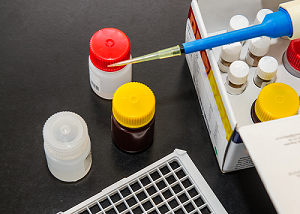Cas9 Nuclease changed what was possible in molecular biology. It allows precise cutting of DNA at targeted locations. That capability opened doors. Researchers now can study genes, edit traits, and probe disease mechanisms with much greater clarity than before. The enzyme cuts both strands of DNA guided by a small RNA molecule. After the cut, the cell repairs it—sometimes introducing mutations, sometimes correcting them. This duality makes it a powerful tool. It is used across many fields: medicine, agriculture, biotech, and basic biology.
Beyond the enzyme itself, related tools like Cas9 Monoclonal Antibody are being developed to help detect, control, or study Cas9’s presence and activity in cells. With that in view, this article dives into what is known about Cas9’s functional features, its most mature applications, ongoing challenges, and future prospects.
Key Functional Properties of Cas9: What Makes It Work
Guide RNA Design and Specificity
Cas9’s ability to find a particular sequence depends almost entirely on the guide RNA (gRNA). The guide must pair with the target DNA sequence accurately. Mismatches—especially close to the “seed region” near the PAM (protospacer adjacent motif)—can lead to off-target cuts. Researchers have developed bioinformatics tools and predictive models that analyze things like GC content, secondary structure of guide RNA, accessibility of target DNA, and more, to predict how well a guide will work.
Enzyme Structure, PAM Requirements, and Variants
The structure of Cas9 determines what PAM sequences it can recognize. The canonical Cas9 from *Streptococcus pyogenes* recognizes “NGG.” But scientists have engineered variants with altered PAM recognition sequences, expanding the range of possible targets. The structure also influences the efficiency of binding, cleavage, and even target search kinetics.
DNA Repair Pathways After Cleavage
Once Cas9 cleaves the two strands of DNA, the cell must repair the break. Two main pathways are involved: non-homologous end joining (NHEJ), which is error-prone and often introduces small insertions or deletions; and homology-directed repair (HDR), which can be more precise if a repair template is provided. The choice of pathway affects whether the outcome is a knockout, a correction, or an insertion. Many studies characterize how cell type, cell cycle stage, and delivery method influence which pathway dominates.
Off-target Effects, Kinetics, and Binding Dynamics
Beyond just guide design, there are deeper dynamics. Off-target cutting happens when Cas9 binds and cleaves at locations similar (but not identical) to the intended target. Research into binding kinetics (how quickly Cas9 finds targets, how long it stays bound), the effects of mismatches in PAM-proximal regions, and the search strategy (sliding along DNA, 3D diffusion) all help understand this risk. These factors are crucial when Cas9 is used in live cells, or in organisms.
Research Applications: Where Cas9 Is Changing the Game
Functional Genomics and Gene Knockout Studies
One of the earliest and still most frequent uses of Cas9 is knocking out genes to see what happens. By disrupting a specific gene, researchers can infer its function. This has enabled large scale screens—both pooled and arrayed—to identify which genes are essential, which contribute to disease phenotypes, or which modify responses to drugs or environmental stress. In many disease models, knocking out genes via Cas9 has revealed novel therapeutic targets.
Correcting Mutations and Precision Gene Editing
Cas9’s precision allows correction of disease-causing mutations. If HDR is used, researchers can replace a faulty sequence with a correct one. This has been applied in cell lines, organoids, and increasingly in animal models. A lot of the current research focuses on improving HDR efficiency, reducing unwanted indels, and delivering Cas9 safely into cells.
Agricultural and Plant Trait Engineering
Cas9 isn’t just for human/animal therapy. It’s being used to engineer plants to be more resistant to stress—both biotic (pathogens, pests) and abiotic (drought, salinity). By knocking out or modifying genes that negatively regulate stress responses, crops can be made more resilient. Some recent studies show edited plants tolerating multiple stresses better than wild-type.
Disease Modeling and Variant Function Studies
Many human diseases are associated with genetic variants whose functions are not completely known. Cas9 allows researchers to introduce precise point mutations, replicate human genetic variants in model systems, and compare wild-type vs mutated behavior. Combined with high-throughput sequencing and single-cell technologies, the functional characterization of variants (even “variants of uncertain significance”) becomes feasible.
Therapeutics, Cell and Gene Therapy
Cas9 is central to many emerging therapeutic strategies. Ex vivo editing of patient cells (e.g. immune cells, stem cells) followed by reinfusion is one route. In vivo editing, where Cas9 and guide RNAs are delivered into living organisms, is more challenging but rapidly progressing. Safety, specificity, immune responses, and delivery remain big hurdles. Still, multiple clinical trials are underway.
Practical Tips for Researchers Using Cas9
- Always validate guide RNA designs in silico: use multiple predictive tools, check for off-targets.
- Use controls: non-targeting guides, mock transfections, etc., to distinguish effects of editing from delivery or expression artifacts.
- Optimize delivery: test different formats (protein, mRNA, plasmid) to see which gives best editing with least toxicity.
- Quantify outcomes by multiple methods: genotyping (sequencing), functional readouts (phenotype), and molecular confirmation (e.g. western blot if relevant).
- Monitor for off-target or unintended large-scale genomic alterations, especially in therapeutically relevant cells.
Conclusion
The functional characterization and research applications of Cas9 Nuclease illustrate both the tremendous promise and considerable challenges of genome editing. The tools now allow detailed interrogation of gene function, correction of mutations, and trait engineering in plants and animals. But specificity, delivery, immune concerns, and safety remain key obstacles.
Novatein Biosciences believes that progress in high fidelity enzymes, improved guide RNA design, better detection reagents, and rigorous validation methods will drive Cas9-based technologies toward safer and more reliable uses. The company supports research into improved detection tools (including antibodies), optimized delivery systems, and robust assays.



